Felines have a reputation for being about as trainable as a herd of eels, but did you know cats actually respond very well to clicker training. As cats respond better to positive reinforcement than negative reaction and punishment, offering them food, a favorite toy, or special love pats can motivate them to do just as you request!
Throw out the old notion of cats being untrainable and learn how to clicker train your cat to do anything from staying off the counter to giving you a high five!
You may have heard the term before, but just what is clicker training for cats? And why should you think about such training for your cat?
Animal Wellness Magazine defines clicker training as “a positive reinforcement method based on behavioral psychology.”
Which means instead of yelling at kitty or busting out the much-disputed spray bottle, you’re going to teach your cat to stop doing something you consider a bad behavior with a simple sound and some sort of reward. Sound impossible?

It truly isn’t! Cats are highly intelligent creatures needing not only food, water, and play from you, but also mental stimulation. Feline enrichment is just as important as good nutrition and healthcare. Clicker training to acquire new skills or stop bad behavior will keep your cat’s mind just as agile as his body!
Plus, clicker training cats can help reduce their stress when it comes to their healthcare. Dr. Marci L. Koski, a certified feline behavior and training consultant, explains, “Clicker training can also help teach your cat to participate in low-stress handling procedures such as nail-trimming and giving medications.”
So, training cats isn’t impossible. In fact, using positive reinforcement will keep kitties happily involved with learning new things.
But what can cats learn from clicker training? Almost anything you can imagine!
Solve Bad Behavior with a Clicker
Clicker training can resolve just about all behavior issues in the house. Have cats who bully each other? Click that button when you see them interacting in a way that isn’t all hisses and swats. This teaches the pair you like to see them tolerate each other rather than fighting.

But more than just teaching cats how to get along, Pam Johnson-Bennett, a leading cat behavior specialist, tells Animal Wellness Magazine, clicker training can help felines with:
- Aggression toward humans and dogs as well as other cats, including biting and scratching
- Scratching at furniture and walls
- Excessive vocalization
- Other displays of destructive or negative attention-seeking
- Remaining calm during times of high stress, like vet visits or getting in a carrier
Johnson-Bennett adds, “The only situation in which I don’t use it is with litter box training, because I don’t want to disturb the cat at that moment.”
If you can avoid clicker training with adult cats where the litter pan is concerned, that’s for the best. The litter pan is one of those messy issues in which cats can be easily thrown off. If you’re having a problem with inappropriate soiling, discuss the issue with your vet. If nothing else solves the problem, then give clicker training a try, but do get medical advice first.
For kittens, who are just forming their opinions of the world, clicker training can be an excellent tool to help stubborn babies learn good litter pan habits.

Fun Cat Clicker Training to Sharpen Feline Minds
Clicker training cats does more than just solve bad behaviors. It can also give them a repertoire of cool tricks! But best of all, it’s keeping your cat’s mind moving. As cats age, their cognitive processes begin to decline. Help slow the progression of senility in cats by keeping them engaged and encouraging their famous curiosity.
But when choosing what tricks to teach your cat, take their personality into perspective. Teach them things that make sense for them. For example, cats who tend to the lazier side of life need low energy tricks while fireball cats need tricks geared toward burning out some of their energy.
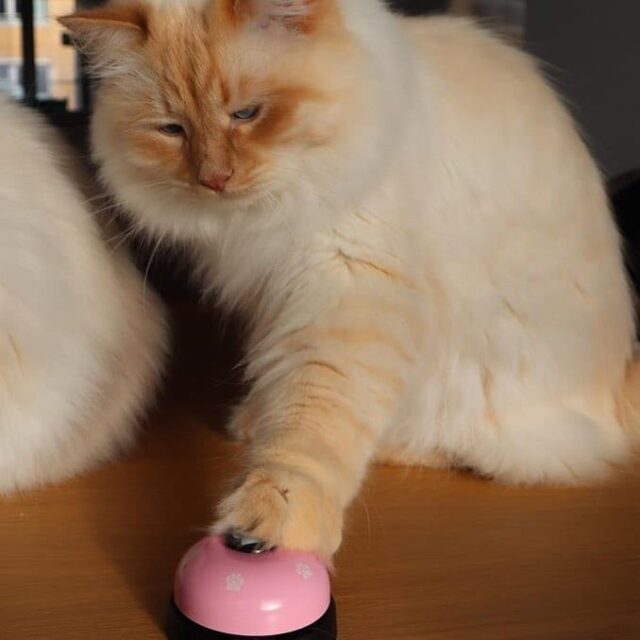
Getting Started with Clicker Training for Cats
What you’ll need for clicker training cats:
- A willing cat – Cats are brilliant little beasts who spend their days learning about everything daring to cross their paths. And since felines love to learn, training with a clicker comes pretty naturally to such intuitive animals. But never force your cat into any activity. Doing so will create a rift in your carefully-crafted relationship.
- Clicker device – These can be purchased online or you can download a clicker training app. You can also use something you find at home, but be sure the tool delivers an unchanging sound every time it’s used. This could be a click-style ink pen or the snap of your fingers, for example. The idea is to create a distinct sound your cat identifies as a cue.
- Positive reinforcement factor – For most kitties, cat treats and food will be your reward for the behavior you’re reinforcing. Cats who aren’t food motivated can be a little trickier to reward. But you know your cat and his favorite things. What makes him the happiest? Is it a silly mouse toy? Or simply chin rubs from you? Toys and scratches can serve as ideal positive reinforcement for cats who don’t give a fig for snacks.
How to Clicker Train Your Cat
Introducing the Clicker
The first step to clicker training your cat is introducing the clicker. To do this, have food or treats on hand. Or, already have in mind what toy or lovey pets you’ll be offering as a reward.

Show the clicker to the cat before clicking it in their presence. As we know, kitties can be jumpy with new noises. Let your cat look at the clicker and offer lots of happy reassurances. When it seems kitty is feeling alright about this new thing, then click the button, immediately offering your cat a treat behind the click.
Don’t feel discouraged if your cat runs off and looks at you like a madman during this introduction. Cats take time to warm up to new ideas. Like many of us, they aren’t huge fans of change. Just keep practicing, clicking, and treating positively until your cat recognizes the clicking noise as a good thing. Once the cat feels good about the clicker, you can progress to shaping behaviors.
Shaping for Success
To get your cat more accustomed to the clicker and its meaning, start with things she does already. One of the easiest behaviors to start with is when your cat is staring at you. She does this already and you love it, so begin there. When you happen to see your cat staring at you, click the clicker and treat her. This helps her get the idea the sound of the ‘click’ means happy reward time.

Love how your kitty girl kisses the tip of your nose with her raspy tongue? Use this as another shaping behavior by clicking the clicker as the kisses are happening and then give her the treat. Be aware though, once a cat positively associates behavior, she may start doing the click-worthy action on her own and often. In this case, expect an adorably obnoxious amount of sandpaper kisses!
Behavior Modification with Clicker Training
Cats don’t respond well to yelling, spanking, or other punitive measures. If anything, these actions can drive a wedge between you and your cat. But with positive reinforcement training using a clicker, you and kitty can live in harmony!
Here’s an example of behavior modification using clicker training:
You don’t want your cat to jump on the kitchen counter anymore.
First thing you’ll need to remember, discourage the bad habit with basically no response. Scoop your cat up when he hops on the counter and deposit him on the tree. Click the button as he stands on the tree and treat your boy. Do this every time he jumps on the counter.
When he instead decides to go sit on his cat tree without your prompting, click the clicker and offer the treat. Anytime you happen to see your cat choose an acceptable spot that isn’t the counter, click and treat! Soon, your smart cat will learn, I don’t get treats when I get on the counter, guess I won’t do that anymore. And you never had to raise your voice or get a squirt bottle!
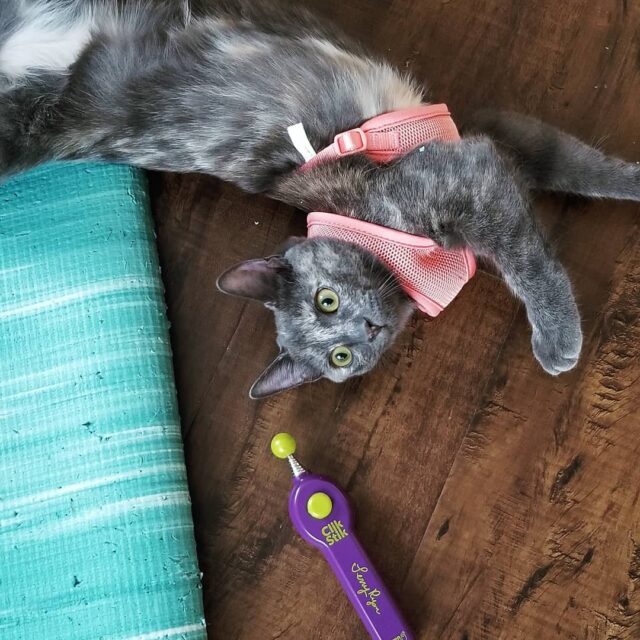
For teaching your cat a cool trick like a high five, Karen Pryor, clicker training guru, offers detailed instructions for teaching your cat several tricks. See if you and your cat can master any of these with her guidance. Plus, Google searches and videos will offer you some thoughts on how best to clicker train cats to do fun tricks! It all depends on what sounds fun to you and your kitty.
Don’t forget, tricks need verbal cues too. When you’re training your cat to do a trick, be sure to always say what it is they’re doing. For example, if you’re teaching your cat to stand on her hind legs, tell her ‘stand up’ or whatever cute name you want her to know as the command for standing up. Cats learn what words mean pretty fast. They’ve proven this time and again with their uncanny ability to know the word ‘food’ right from the start!
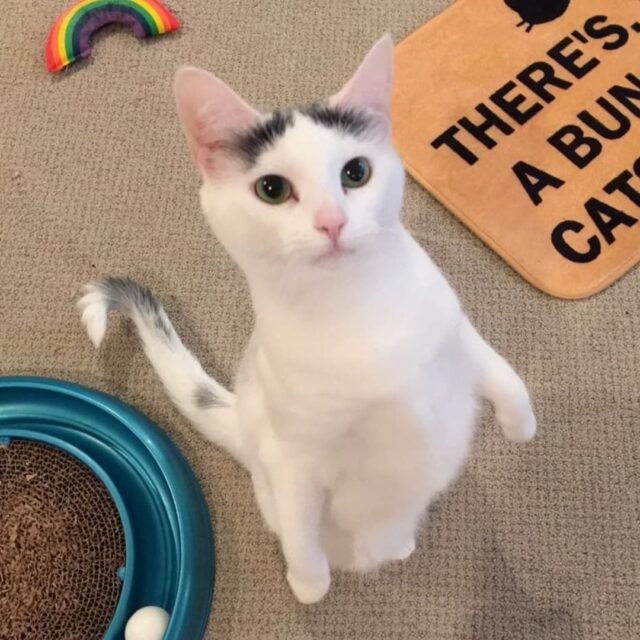
If the idea of clicker training seems intimidating, shake those thoughts away! Cats are intelligent animals who enjoy learning new things. In fact, learning tricks and the engagement that comes with training provides important stimulation for the feline brain.
Boiled down, here are the basic ideas behind how to clicker train cats:
- You’ll need a clicker tool or app, a positive reinforcement like treats, food, toys, or special attention, and a willing cat.
- When your cat performs the desired action you’ve shaped them to, whether good behavior or a trick, click the clicker.
- Immediately following the click, offer your chosen positive reinforcement along with an encouraging, joyful response.
- Repeat!
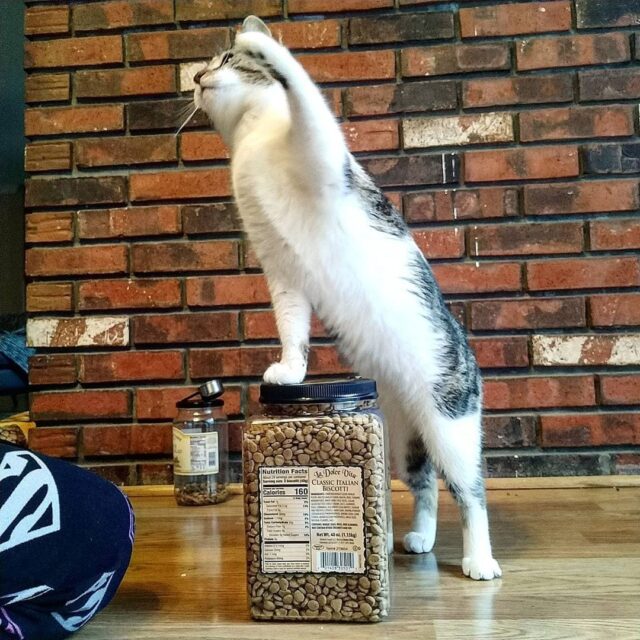
A Note on Clicker Training in Multi-Cat Homes
Whether or not you want to train your cats together or separately is a decision best left to the cat parent as you know your felines best. Marny Nofi, a senior behavior manager on the ASPCA Behavioral Sciences Team, assures cats can be trained together as “cats can tell when the click is meant for them, so there’s no need to separate cats or avoid clicking in front of a cat when training another.”
If your cat can ignore another cat’s click, purrfect. But if one kitty keeps interfering with specific training meant for just one of the cats, then it might be a good idea to separate them during early training. Eventually, the clicker will become old hat and everyone will have their routine when it comes to click and treat.

What Not to Do During Clicker Training
Clicker training cats sounds simple, right? It truly can be with some cats. Others will take a little longer to get it and that’s fine too. Don’t get mad or frustrated with your cat. What’s important is remaining patient and allowing your cat to dictate training speed. After all, if a cat views training as a stressful situation, he will avoid it at all costs and might very well do the opposite of the desired result.
If you feel frustrated during training, take a break and step away. Clicker training your cat should be a fun activity for you both. It’s an excellent bonding exercise that helps form a tighter trust between you and your cat. Enjoy the training and make it fun for kitty too!
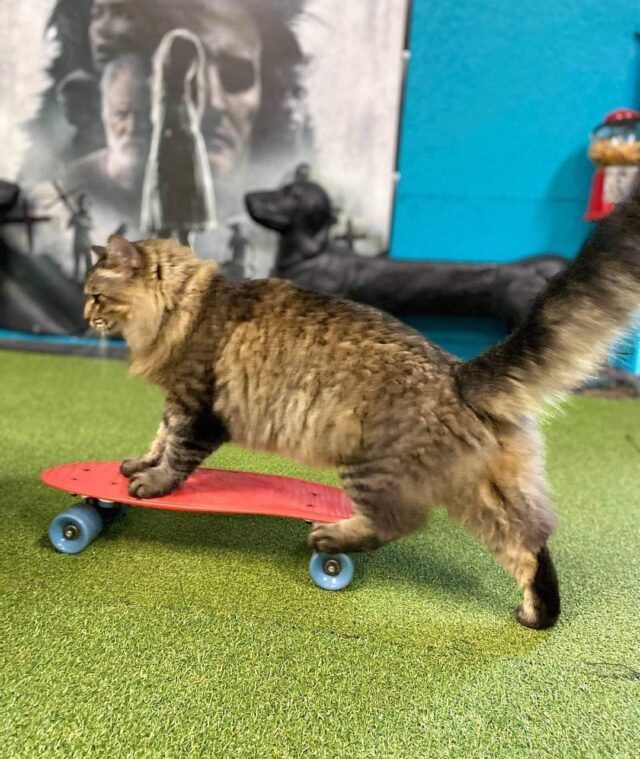
5 Quick Tips for Clicker Training Cats
- Whatever you choose to be the positive reinforcement, make sure it’s something that really gets your cat’s attention. An especially stinky treat that gives them swirly eyes or a toy their paws can’t help but grab for make ideal choices to get them motivated.
- When training cats with treats, pick up food bowls to keep felines more interested in the treats you’re offering. If they’ve gorged on crunch, then a cat may take a lackadaisical attitude toward training.
- Start will small behaviors and work up to larger tasks. Don’t overwhelm kitty with too much right away or he might lose interest.
- Stay calm. Remain patient. Cats do things in their own time. It’s their world and don’t forget it!
- Have fun spending time with your furry best friend as you journey into to fun world of clicker training for cats!
H/T: www.animalwellnessmagazine.com
Feature Image: @purrsuasioncattraining/Instagram & @church_aka_tonic/Instagram
